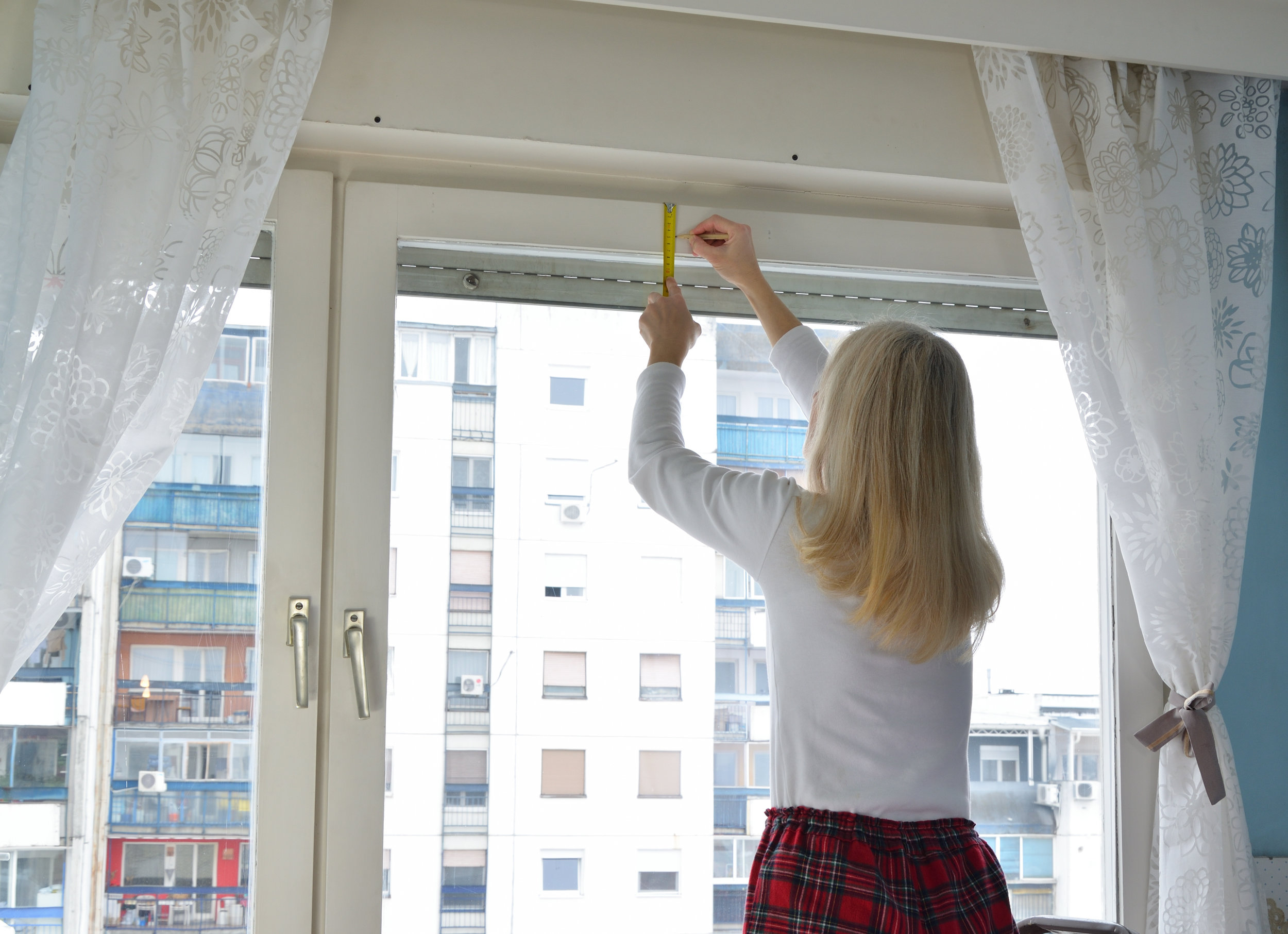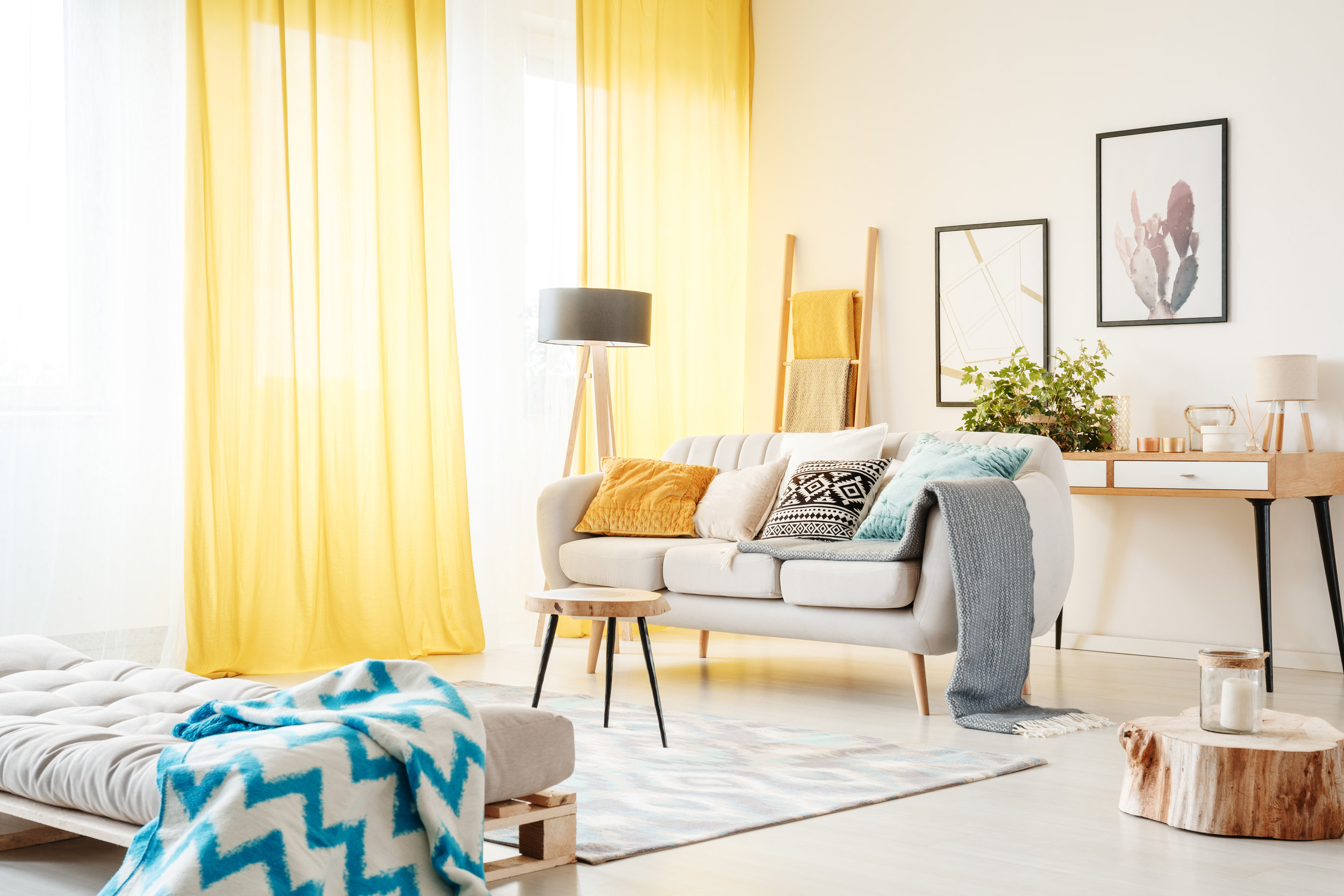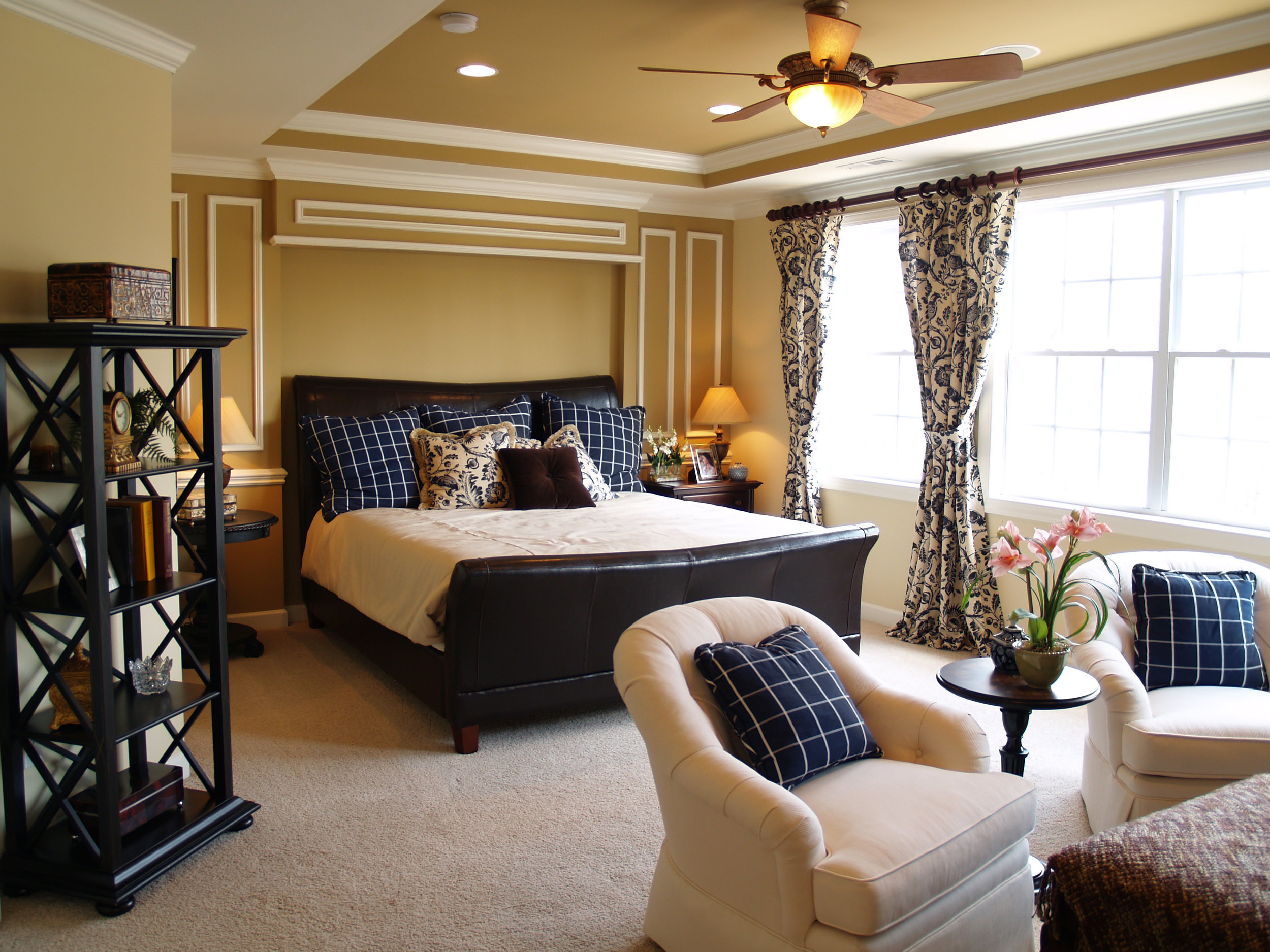How to Pick and Measure the Perfect Curtains
Curtains are an elegant and fairly simple way to give your interior a polished, designed look. Much more than regulating light and privacy, curtains coordinate a decor, provide visual interest, and hide architectural oddities. They can draw the eye and change the mood of a room. Breezy sheers can provide airiness and light, while posh fabrics add luxury and sophistication.
Although curtains are relatively simple to measure and plan for, there are definite do’s and don’ts to keep in mind. Choosing among curtain sizes, curtain designs, and types of fabric, as well as how the curtains will be hung are all important factors when learning how to measure for curtains for your home.
Window Treatment Terminology & Curtain Lengths
Before we begin, do you know the basics of window terminology? These terms make a difference in how to measure for curtains.
Inner frame: the space between the frame of the window, usually the dimensions of the window itself.
Outer frame: the measurement from the outer edge of your molding or trim on each side of the window.
Sill: the horizontal part forming the bottom of the window frame.
Return: the distance from the curtain to the wall, created by the depth of the rod. Always allow for the curtain return so that your installation has a professional look.
How to Measure for Curtains -- the Basics
Width
For most curtains and window treatments, start by measuring the width of the rod. Then multiply that number by 2, 2.5, or 3 to get your desired fullness. Anemic curtains draw attention to themselves and look awkward. It takes two or three times more material than the window’s width to provide the desired amount of fullness. The thinner the material (e.g., sheers), the more width you will need.
For example, your window measures 30" wide. You will need a minimum of 60” of material (two panels of 30” wide). If your measurements are an odd number, always, always, round up. If you are buying curtains for this 30” wide window that come pre-made in specific width panels, such as 24” or 36”, go for the larger width. In this case, two 36” panels will give a much better look than the two 24” panels, which combined are only 48” and not the desired minimum number of 60” (2 times 30”).
A rule of thumb is that standard fullness equals your window width multiplied by two, a more deluxe look is window width multiplied by 2.5, and a luxuriously full look is achieved by multiplying the window width by three.
Most panels are “flat,” meaning they are measured end-to-end, without any bunching included. Only pleated curtains, which are less commonly used in modern interior design, include any allowance for fullness and bunching.
Length
You will need to decide what style of curtains you wish to hang. That decision affects the curtain sizes you will choose.
Sill length: the measurement from the top of the window frame (or the rod) to the sill. This is common for functional curtains that open and close to control the amount of light coming into the room or the amount of privacy, especially at night. Sill-length curtains tend to be more informal in style. Depending on the size of your window, typical sill-length curtains are 63” to 83” long.
Apron length: the measurement from the top of the frame to the bottom of the frame. This length curtain is more informal, like sill-length, but with more flexibility and elegance. Often, apron-length curtains are gathered and pulled back, with a layered, or stacked curtain underneath, such as a sheer layer. A typical length is 84”.
Floor length: the measurement from the top of the window frame (or top of the rod) to the floor. These curtains should not touch the floor but come quite close. Visually, they reach the floor but hang straight, with a clear bottom line. These tend to be more formal than sill- or apron-length curtains, but they can still be opened and closed easily. The longer curtains give the illusion of bigger windows and divide the space using the color and design. Floor length curtains are usually 96” in length.
Puddle: Add 4-6” to your floor-length measurement so that your curtains not only reach the floor, but “puddle” at the bottom. Floor length curtains are more elegant and formal; puddle curtains are the most formal of all, best suited for living rooms, dining rooms, and more formal bedrooms. These curtains are not opened and closed, but are more decorative than functional. Puddle curtains are typically 108”-119” in length.
Café length: the measurement from the top of the sash (or the middle of the window) and the sill. Café curtains, with a valance at the top of the frame and curtains on the bottom half, are more commonly used in bathrooms and kitchens. These curtains allow for privacy on the lower half of the window, but maximum light through the top portion.
Fabric and Design Affect Your Measurements
If you are using a thinner fabric, such as a sheer, voile, nylon, gauze, linen, or muslin, you’ll want to round up or multiply up (2.5 -3 times the width of the rod) to achieve the desired thickness. Thicker fabrics such as brocade or velvet, or a lined curtain, will require less curtain width to achieve the same appearance of fullness (2x the rod’s width will suffice). Decide on the material of the curtain you will use before you finalize your measurements.
Rod Placement Affects Your Measurements
There is no rule about how far above the window frame you may install your curtain rod. The higher the rod on the wall, the longer the curtain you can choose. Many decorative rods are designed to be mounted several inches above the frame at the top and beyond the frame several inches to the left and right.
Curtains, when opened or hanging in stationary panels, almost always are beyond the window frame, so be sure you have measured as far as you want the curtains to go, side-to-side, top-to-bottom, not just the window.
Get Help from Omorfia
If you want to be sure you measure correctly for your new curtains, give us a call at Omorfia. We will help advise you on fabrics, styles, and measurements to achieve the look you want. Curtains can be frustrating if your investment doesn’t pay off with a polished look. A few tweaks in measurement, placement, and “training” of your panels makes all the difference. Give us a call to make sure your curtain investment pays off with the style and reward you are seeking.







